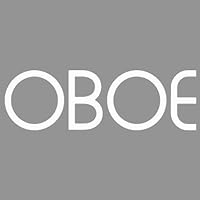In the dynamic world of architecture, where creativity converges with precision, having the right workstation is not just a preference – it’s a necessity. Architects engage in demanding design, modeling, and rendering tasks, making the choice of a workstation a pivotal decision. In this blog, we’ll explore five essential steps to guide architects in choosing their perfect architectural workstation, with the HP Zbook Firefly G9 standing out as a recommended solution that caters to all the unique needs of architects.
Why Your Workstation Matters in Architecture: Navigating Demanding Tasks with Ease
As an architect, your work involves intricate design processes, complex 3D modeling, and resource-intensive rendering tasks. The right workstation serves as the backbone of your creative endeavors, enabling you to handle these demanding tasks with precision and efficiency.
Five Steps to Choose Your Ideal Architectural Workstation
Assess Your Workflow and Software Requirements:
Begin by assessing your workflow and software needs to determine the ideal workstation configuration. Different architectural tasks require specific hardware capabilities, and tailoring your workstation to these requirements is the first crucial step in the selection process.
Consider Processing Power and Multicore Performance:
A powerful processor is essential for handling 3D modeling, rendering, and multitasking seamlessly. Opt for a workstation with a processor that not only offers high clock speeds but also boasts multicore performance, ensuring efficiency in your architectural workflows.
Opt for a Professional-grade Graphics Card:
Architectural work heavily relies on 3D modeling and rendering, demanding a high-performance graphics card. Choose a professional-grade GPU that can handle the intricacies of architectural visualizations, bringing your designs to life with accuracy and speed.
Prioritize Ample RAM and Storage:
Smooth multitasking is a hallmark of an efficient architectural workstation. Prioritize ample RAM to handle the demands of large-scale projects and opt for fast storage solutions, such as SSDs, to ensure swift data access and project loading times.
Choose a High-resolution Display and Ergonomic Design:
A high-resolution display is crucial for accuracy in architectural work. Additionally, an ergonomic workstation design ensures comfortable and prolonged use. Choose a workstation that offers both a high-quality display and ergonomic features, supporting your creative process while prioritizing your well-being.
Recommended: HP Zbook Firefly G9 – Catering to Architectural Excellence
In the realm of architectural workstations, the HP Zbook Firefly G9 emerges as a recommended solution that addresses all the software, hardware, display, and ergonomic requirements of architects. This powerful workstation seamlessly combines performance, reliability, and ergonomic design, ensuring architects have the tools they need to bring their architectural visions to life.
In conclusion, the success of your architectural endeavors hinges on the workstation you choose. Follow these five steps to ensure you find the perfect architectural workstation that aligns with your workflow and creative aspirations. Consider investing in the HP Zbook Firefly G9, and let your architectural brilliance unfold with precision and efficiency.
Compare and view all the best laptops for Architects
Read more bout the 5 Steps For Choosing An Architect Workstation

































